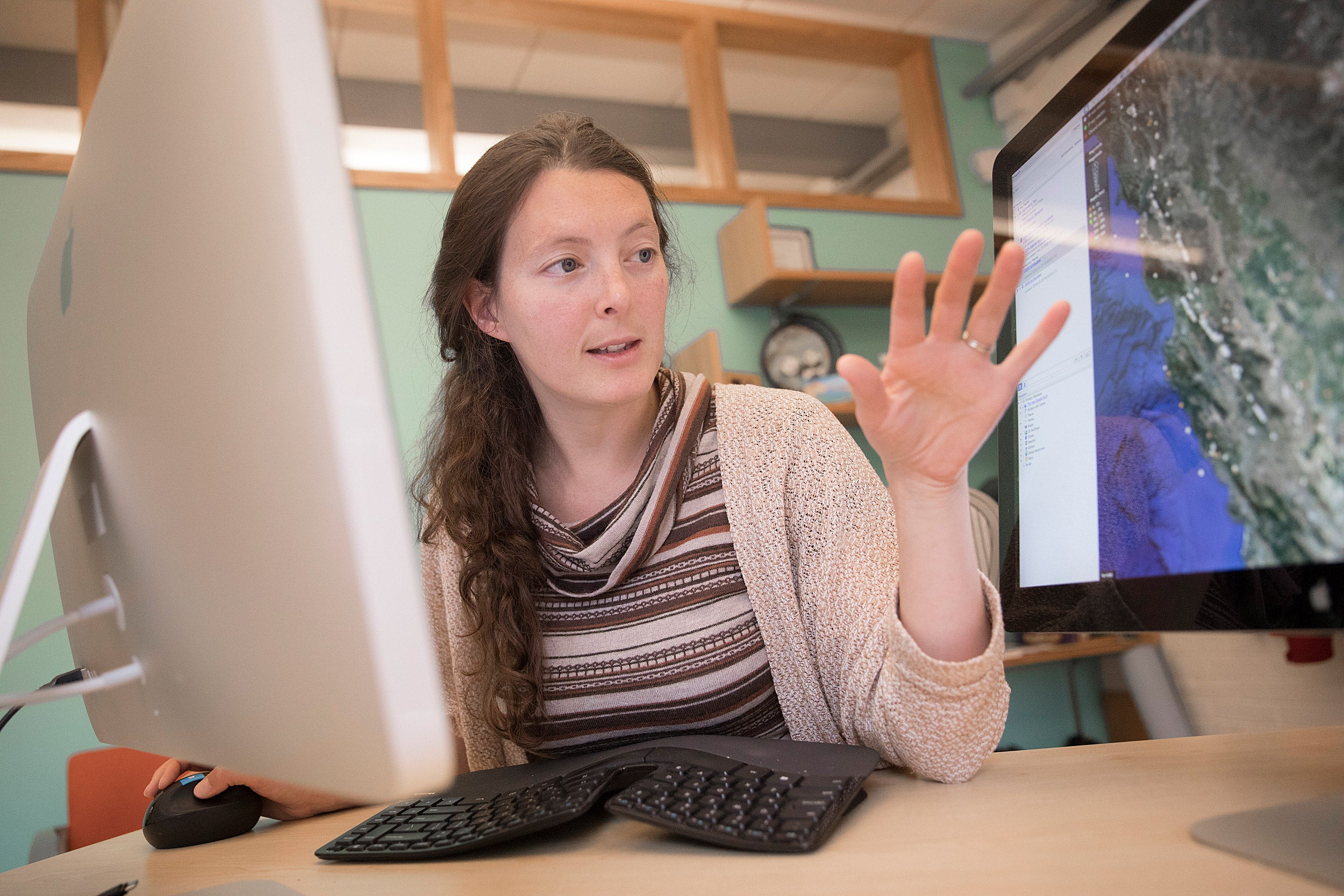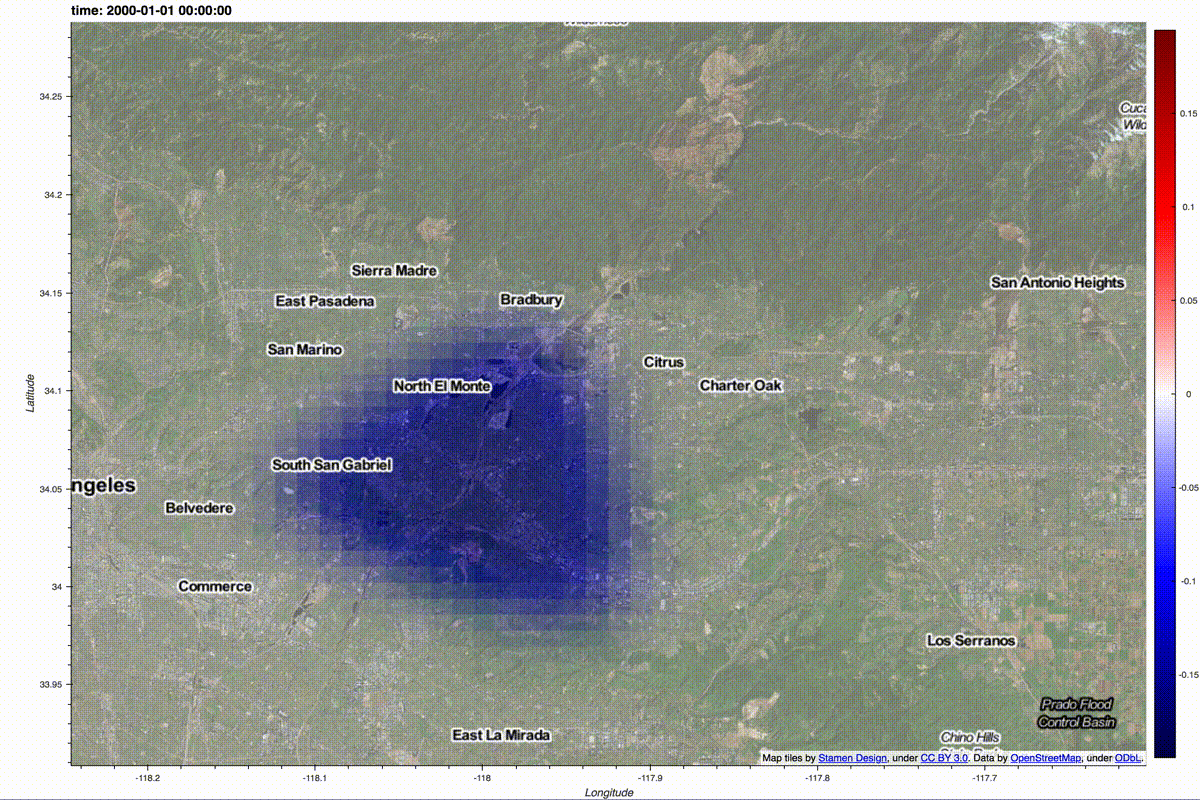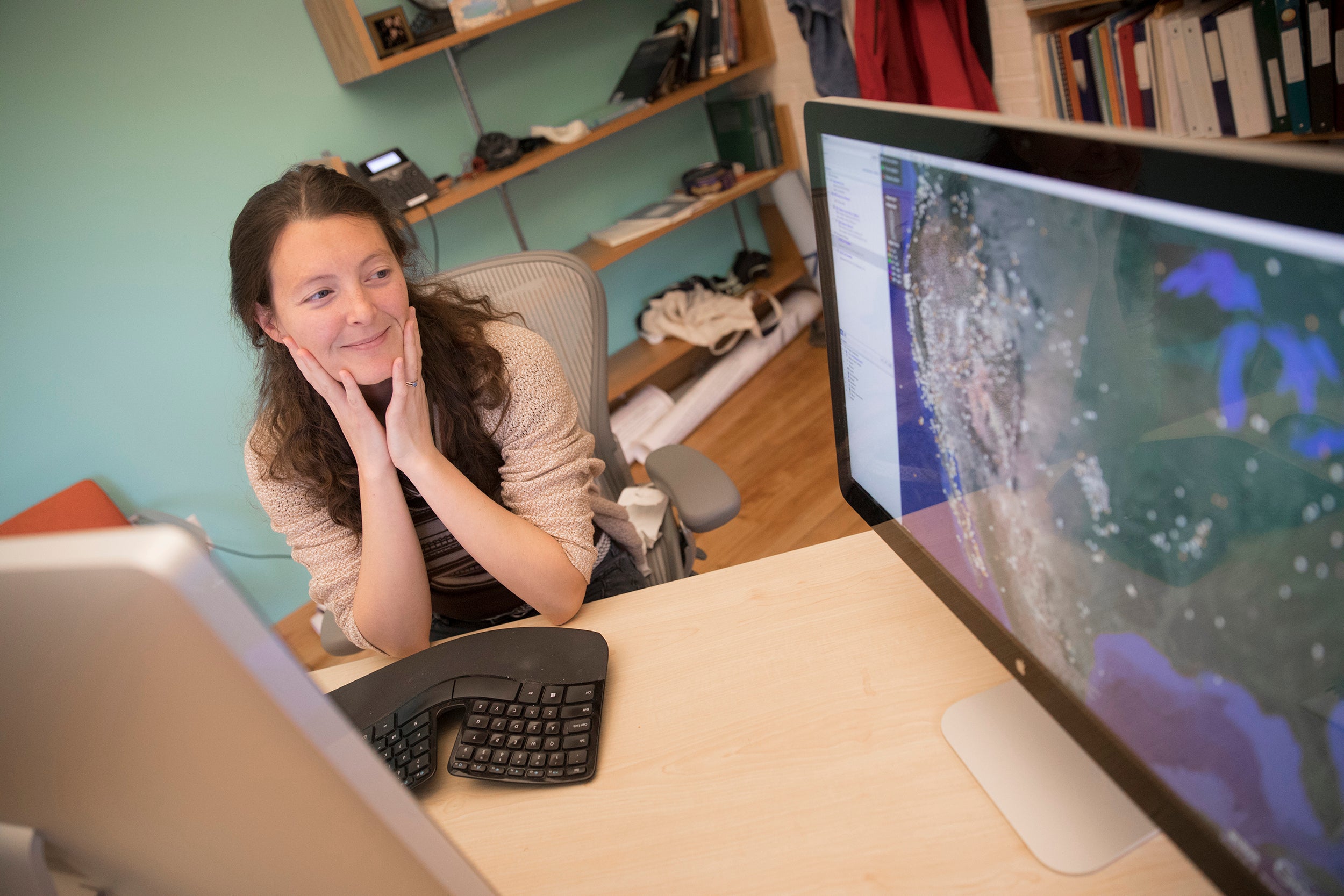
A recent study out of the the lab of Marine Denolle, pictured, measures seismic noise to measure the size and water levels in underground aquifers in California.
Kris Snibbe/Harvard file photo
A measure of success for groundwater storage
Seismic noise can more accurately track water levels in underground aquifers
Seismic noise — the low-level vibrations caused by everything from subway trains to waves crashing on the beach — is most often something seismologists work to avoid. They factor it out of models and create algorithms aimed at eliminating it so they can identify the signals of earthquakes.
But Tim Clements thinks it might be a tool to monitor one of the most precious resources in the world — water.
A graduate student working in the lab of Assistant Professor of Earth and Planetary Sciences Marine Denolle, Clements is the lead author of a recent study that used seismic noise to measure the size and water levels in underground aquifers in California. The technique could even be used to track whether and how aquifers recharge following precipitation, and understand geological changes that might occur as water is pumped out. The study is described in a published paper in Geophysical Research Letters.
“The way this would commonly be done today would be to take a measurement at a groundwater well,” Clements said. “And if you have a network of those wells, you can develop a model where you assume a number of hydrological parameters … and that allows you to measure the health of the aquifer.
“But what we showed is we can just directly measure these waves that are traveling through the entire aquifer. So we don’t have to make those assumptions,” he said.
Monthly change in seismic velocity within the San Gabriel Valley aquifer from 2000 to 2017. Time is noted top left.
Graphic by Tim Clements

Using seismic noise, researchers were able to measure the water level change of the San Gabriel Valley aquifer, just outside Los Angeles, to within a centimeter.
A massive drought over the past five year was one reason researchers chose to focus on the San Gabriel Valley.
“We estimated [the water-level change] at about half a cubic kilometer,” Clements said. “And that’s exactly what the San Gabriel water master said they pumped out during the drought to meet demand.
“There are over 1 million people who live in this relatively small area outside Los Angeles who depend on the groundwater for all their water-use needs. So our goal was to understand if we can use seismic waves to understand what’s happening with the aquifer.”
Tim Clements
“There are over 1 million people who live in this relatively small area outside Los Angeles who depend on the groundwater for all their water-use needs,” Clements said. “So our goal was to understand if we can use seismic waves to understand what’s happening with the aquifer.”
More like this
While the study wasn’t the first to hit upon the idea of using seismic noise to study groundwater, Denolle said earlier efforts were hampered because they relied on a signal that was relatively weak in comparison to environmental factors like temperature and pressure.
“This was a large signal we looked at,” she said. “The aquifer oscillated with 20 meters of water-height changes in a couple years, so it’s a bigger signal than any environmental influence.”
The system could also be a useful tool for anyone involved in water resource management, Clements said, because it can give them a moment-to-moment view of precisely what is happening underground.
“In this study, we looked at about 17 years of data, from 2000 to 2017, but going forward this could be used in a water-management application, so you could get a picture of what’s happening with the aquifer on a daily basis,” Clements said.
Aside from providing groundwater measurements, the technique can be used to monitor the health of an aquifer over time.
“If we had the data, we may be able to use this technology to look back at what aquifers looked like in the past and study the long-term evolution of an aquifer,” Denolle said. “One of the challenges for people who manage water resources is whether aquifers still respond elastically, meaning can we recharge it with the same storage capacity or is it losing capacity over time as we pump water out? Using seismic waves, we can potentially find out whether these aquifers are elastic or not.”
Going forward, Clements said he plans to pursue ways to improve the resolution of the system at both the micro and macro levels.
Working in collaboration with faculty at Tufts University, he installed wells and seismometers on campus to track changes as groundwater is pumped to the surface to irrigate sports fields. Other efforts are focused on using the existing seismometer network in California to improve ways to measure the overall size of aquifers.
This research was supported with funding from Harvard University.





